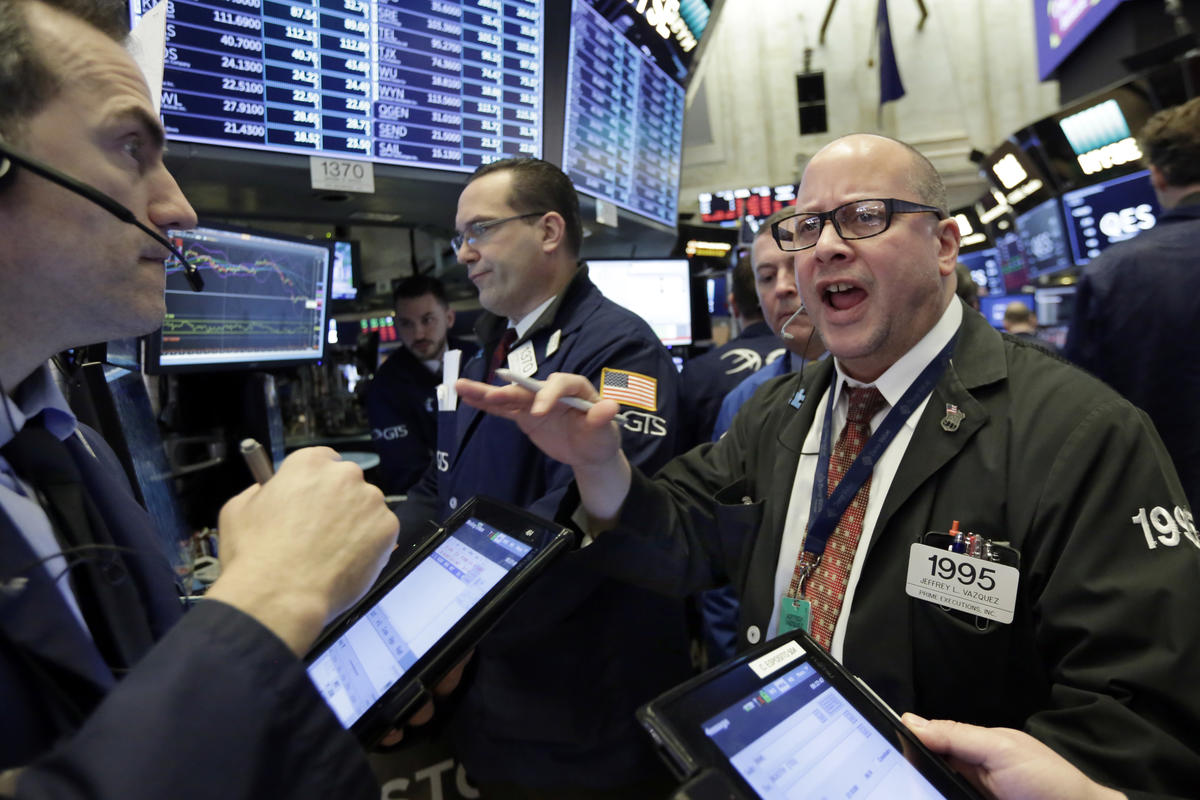Over the course of 2017, one of the primary factors fueling investor optimism was the fact that, for the first time ever, global stocks rose in basically uninterrupted fashion, a sign of synchronized global growth that boded well for future prospects.
Now that narrative is showing signs of unraveling, and while the US is seen as something of a haven, weakening trends abroad could pose another risk to Wall Street, which is already grappling with the geopolitical concern of trade uncertainty, MarketWatch reported.
“We’re starting to see the end of the synchronized global growth that has prevailed over the last two years,” wrote Sara Potter, an associate director at FactSet who analyzes global markets. “While the US economy seems strong, growth in Europe and Japan is moderating, and emerging markets are under increasing economic and financial market pressure.”
According to FactSet, which cited data from the International Monetary Fund, global GDP is expected to grow 3.9% in 2018 and hold at that level next year. The US is expected to grow 2.9% in 2018, an acceleration from the 2.2% expansion in 2017, and then cool slightly to 2.7% in 2019. FactSet’s own expectation, based on the mean estimate of analysts it polled, is that the US will grow 2.8% in 2018 and then slow to 2.4% in 2019.
Potter wrote that the slowing growth was “likely in response to the accelerated pace of interest rates by the federal reserve.”
Over the past several weeks, policy uncertainty has been the biggest driver of moves in the US stock market, with investors fretting that protectionist measures pushed by President Donald Trump could escalate into a wider trade war, or that recent issues surrounding internet companies could herald a more aggressive regulatory environment against some of the economy’s biggest names.
Fed-Related Risks
Over the longer term, however, the real policy risk facing Wall Street may not come from the White House or congress, but from the federal reserve.
Barry Bannister, head of institutional equity strategy at Stifel, has been warning about fed-related risks for a while, and he recently speculated that if the fed mishandles the transition to a more normalized policy, that could spark an “unusually rapid” bear market, leading to a “lost decade for stocks,” or 10 years with no positive returns.
A moderation of growth does not mean contraction, and it doesn’t mean that a recession is imminent. However, slowing growth—both in the US and elsewhere—would likely be another headwind for an equity market that is trading near record levels.
“Things aren’t as rosy if you look to China, emerging markets or Europe. Weakness in those regions could eventually become a headwind for the US,” said Suzanne Hutchins, senior portfolio manager of the $1.5 billion Dreyfus Global Real Return Fund, which is run out of the investment boutique Newton.
“The US market seems to be shrugging off any sort of risk right now, since the S&P 500 is near a record and volatility is low. We think that’s wrong, as trade would become quite challenging for the global economy,” she said.
Growth to Slow
The US isn’t the only place where growth is expected to slow next year. In the eurozone, FactSet expects growth of 2.2% this year, which will then slow to 1.9% in 2019. This trend holds across major European countries, including Germany (where growth is seen going from 2.5% this year to 2.2% next year), France (from 2.1% in 2018 to 1.8% in 2019) and Italy (1.5% to 1.2%).
Growth in Britain is expected to go from 1.6% this year to 1.4% in 2019. “Uncertainty surrounding Britain’s exit from the European Union is hurting business confidence and the weak pound has boosted inflation and suppressed private consumption,” FactSet’s Potter wrote.
China is also expected to see moderately slowing growth. After expansion of 6.6% this year, it is expected to grow its economy by 6.3% next year.
Even these moderated growth rates could be at risk of slowing further if trade tensions worsen between the US and its major trading partners.
UBS calculated that if the trade issue were to simply escalate from current levels, US economic growth would be 1% lower, while global growth falls 42 basis points (0.42 percentage point). In the more severe possibility of a trade war, on the other hand, 245 basis points is expected to be cut from US growth, while global growth would be expected to be 108 basis points lower.
“The key things to watch over the next few quarters will be the impact of rising trade tensions, global inflation trends, and the pace of central bank monetary policy changes,” FactSet’s Potter wrote. “All of these factors are likely to determine the path of global economic growth over the next few quarters and years.”


